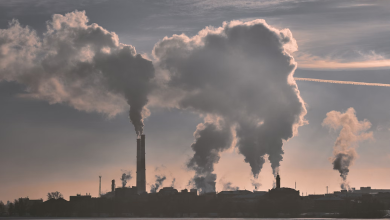Underground Climate Change – Scientists Raise Alarm Over A ‘Silent Hazard’

Alessandro Rotta Loria, an assistant professor of civil and environmental engineering at Northwestern University, and his team have installed a number of sensors – not much bigger than a credit card – across Chicago to track underground temperatures.
In an effort to track a ‘silent hazard’, more than 100 of the sensors have been placed in parking garages, basement boiler rooms and subway tunnels. Rotta Loria raised concerns over “a significant amount of heat beneath our feet” that’s causing the ground to deform already.
According to his research, air temperatures in underground human-made structures can be up to 25 degrees Celsius higher than “undisturbed” ground temperature. It’s a threat distinct from global warming but one that comes with similar risks for public health and crucial infrastructure.
The research detailed how heat trapped under the surface is triggering an “underground climate change” – one that’s different from the climate change in the atmosphere. The phenomenon could cause major cities across the globe, including Chicago and London, to “sink”.
Underground Climate Change: The Path To Mitigation
Subways and buildings emit heat directly into the sublayers of the ground. As the heat proliferates, the ground also deforms, eventually causing city structures and infrastructure to crack. The problem is a “direct consequence of building our structures”.
With rising heat underground, Rotta Loria warned that public health, public transportation and building structures will suffer. US Transportation Secretary Pete Buttigieg said staying flexible is key as the world adapts to climate change and projects are implemented over long periods.
Back in his lab, Rotta Loria transfers the data from the temperature sensors into a coloured heat map, showing how quickly underground heat has increased over the last few decades. “If we compare it with … how surface temperatures have risen, it’s actually faster,” he added.
ALSO READ : Check Out: Can ICCM5 Help Lessen Chemicals’ Environmental Impact?
In order to mitigate waste heat escaping into the ground and triggering such problems, thermal insulation can be installed underground and built into new structures. Or, the excess heat could be captured and used as geothermal energy to warm and cool buildings.



